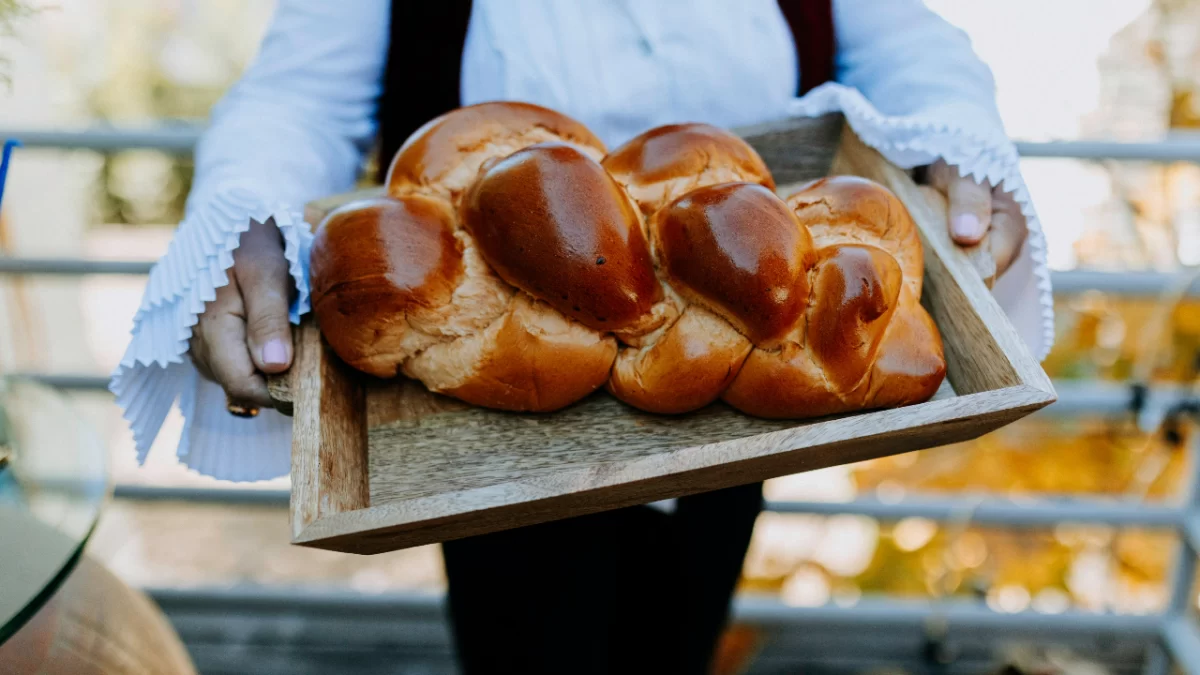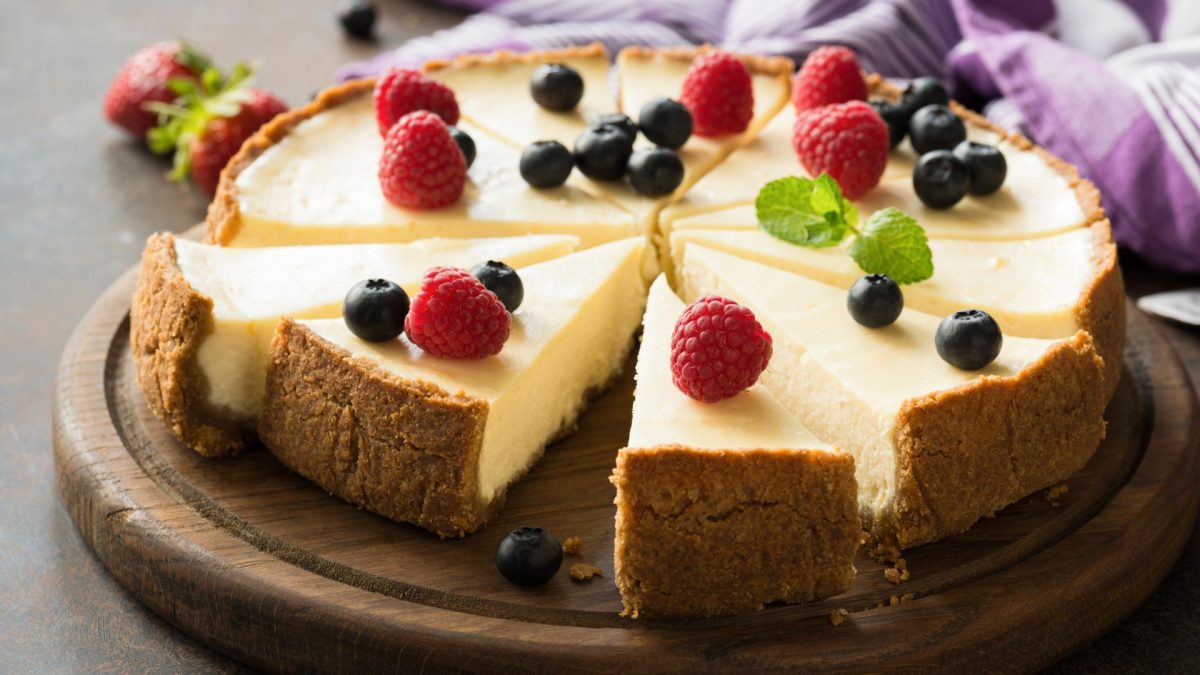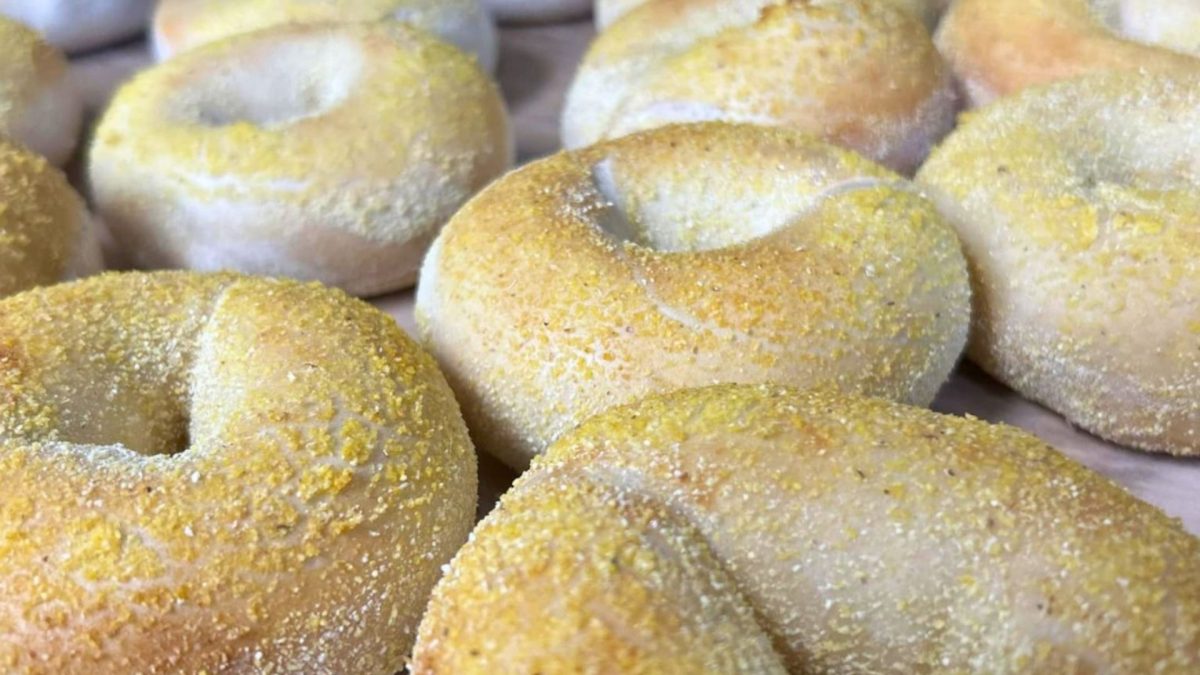This story was first published in the Detroit Jewish News.
The kitchen started to smell weird. My dad was eating the stuff with gusto. I started to gag and ran out of the kitchen.
I can remember walking into my parent’s kitchen when I was a kid, and my father was sitting at the table with a euphoric expression on his face. Just as I sat down at the table, my mother put a plate in front of him. He swooned. Happiness covered his face. He said he was in “seventh heaven.”
“What is that?” I asked.
“Petcha,” my mother proudly said. “I make this for your dad all the time. He loves it.”
“What is it?” I asked.
“It’s made from the hoof of a calf. Sort of like a gelatin with garlic and onions. Bubbie taught me how to make it,” Mom said.
The kitchen started to smell weird. My dad was eating the stuff with gusto. I started to gag and ran out of the kitchen. I wonder if a Jewish veterinary podiatrist was involved somewhere in this recipe.
Petcha, kishka, tongue, broiled matzah balls, cholent.
The book Jewish Cooking in America describes petcha:
“Until the latter part of the 19th century, Americans made natural gelatin, a glutinous material obtained from animal tissues and then boiled for a long time. This was the way Jews made petcha, or calves’-foot jelly. The calves’ feet were cleaned by singeing off the hair. Then they would be made kosher and stewed with onions and salt and pepper. The meat that was left was freed from the bone. Hard-boiled eggs were added and the whole was allowed to congeal. This formed a sort of firm aspic, which was served cold. Today few people make petcha and most buy manufactured gelatin.”
Oy.
But then there’s kishke. My Bubbie’s was delicious until I found out it was made from the intestines of the cow. Kishke (meaning “gut” in Yiddish) is also known as stuffed derma or “helzel,” which is stuffed chicken skin. Kishke is a stuffing made from vegetables, schmaltz and some kind of starch, such as matzah meal, crackers or bread all stuffed inside a cow intestine. Today, the casing is no longer made from cow intestine (thank heavens), and you can buy the whole kishke ready-made at your local kosher market or butcher. It’s on the menu in very few restaurants and there are many versions of this.
Here comes a real beauty. Tongue. I bought a fresh tongue once and started to boil it in a big pot. When the boiling started, the tongue rose to the top and hung there with foam and froth all around it. It was one of the grossest things I have ever made. I threw it in the garbage.
My family used to eat tongue sandwiches. Rye bread, mustard and a thick layer of tongue. I couldn’t believe it was a real cow’s tongue, but you could see the lines and curves — just like a real tongue. I used to stick out my own tongue and think that no one would ever eat a real tongue. Even from a cow. Totally gross.
The MGM Commissary in Hollywood was a private dining room for guys like Louis B. Mayer. He had to have his chicken soup every day. The chef knew Mr. Mayer liked his soup made with a fresh killed kosher chicken or it would be sent back. He also put the matzah balls under the broiler until they were “brown and very crisp” — just like Mr. Mayer liked them.
In my family, whoever made the matzah balls made sure they were light and delicious. You put your sweat and tears into that bowl with eggs, matzah meal and schmaltz — and then you prayed. If I had been caught putting one of my Bubbie’s matzah balls under the broiler, I would have been banished to the dill pickle crocks in her cellar.
And then there’s cholent.
We had just returned from Israel and woke up in the hotel to the aroma of cholent. It was the most beautiful bouquet. So when we returned home, I decided to make it. It was my Bubbie’s recipe, and my mom made it all the time. But mine was different for some reason. Mine was like lead. It had great flavor, but it was like someone poured lead into your stomach. I felt terrible for the people I invited for dinner. For some reason, no one called the next day to thank me for the meal.
There was a Cholent Burnoff in Cleveland many years ago. “We couldn’t do ribs,” writes Sara Brizdle Dickman, “so we make this Jewish soul food Saturday throughout the winter.”
Word has it that there was Alsatian cholent, vegetarian cholent, Indian vegetarian cholent and some recipes suggest you can use as many kinds of beans as you wish. Never stir the cholent, eat slowly with a red wine, beer or schnapps. Serve with sour pickles, a big green salad and a compote for dessert. Then call your gastrointestinal doctor and make an appointment or maybe call 911.
Meyer Lansky’s mother had better luck with her cholent, and her son found his career at 12 hauling cholent to crap games where he tossed his nickel (that should have been given to the baker to put the cholent in his oven). The first time he tossed his nickel in, he lost. He went home with an uncooked crock. The next time he won, and that started his gambling career.
I think I’d rather stick with chicken soup with regular matzah balls, roasts, corned beef sandwiches with Russian dressing, potato kugel and other kinds of kugel, blintzes and all the other wonderful Jewish foods to love and enjoy for many years. Forget the others — especially the tongue.
Sandy Hermanoff is a writer and public relations consultant










